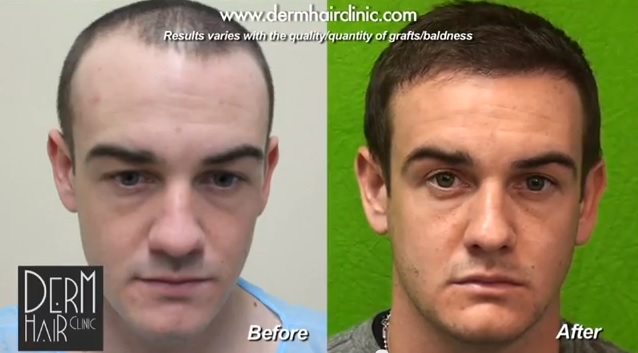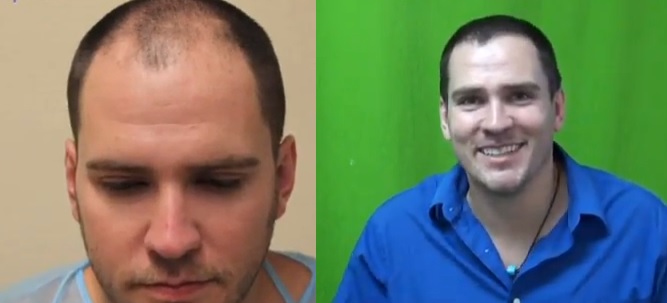Explaining FUE hair restoration
With FUE hair restoration, doctors use handheld tools that “punch out” out individual units from the donor area. The grafts are then transplanted to the recipient area. It is a less invasive way to surgically remove the units, with FUE punches only 0.8 to 1.2 millimeters in size. Strip excision removes an elliptical-shaped strip to harvest follicular units. This technique creates a strip scar that is difficult to conceal.

Dr. Masumi Inaba, a Japanese dermatologist, first described the process of extracting individual follicular units in 1988 using a 1-millimeter needle. Considered the inventor of FUE and a pioneer in the study of hair loss, he published the findings of his research in “Androgenetic Alopecia: Modern Concepts of Pathogenesis and Treatment” in 1996.
Dr. Inaba based his extraction on the punch grafting technique created by New York-based dermatologist Dr. Norman Orentreich in the early 1950s. Dr. Orentreich’s hair restoration technique used 4-millimeter punch grafts, which cause visible scarring and an unnatural appearance of the hair.
FUE hair restoration eliminates the drawbacks of punch grafts by extracting units individually. The technique allows for a more precise placement of grafts due to the smaller size and creates a natural-looking hairline. Scarring is also minimal with the tiny, round holes not visible.
Follicular unit strip surgery ( FUSS ) removes a portion of scalp from the back of the head. The strip is elliptical in shape. The procedure is also known as strip surgery or follicular unit transplant (FUT). Surgeons then make smaller grafts from the portion removed for the recipient area. A main drawback is the scarring left at the donor source.
More patients are now opting for FUE, although FUSS is currently more common than FUE for follicular unit transplantations. FUE is more time consuming and fewer hair surgeons perform it, but there are more advantages for this method of hair transplantation.
Advantages Over FUSS
- Less invasive surgery
- Faster recovery time
- Minimal scarring, unlike the strip scar
- Patients can wear hair short, without scar visibility
- Less risk of permanent nerve damage without strip incision
- Ability to harvest more head donor hair in the future
- Allows more options for donor areas
- More natural hairline using nape hair
FUE Technique Variations
All FUE hair transplantation variations are based on the same extraction process. The first incision cuts skin surrounding the follicular unit, either to partially or completely separate the follicle from tissue attachments. The cut is made at varying depths. The follicle is then extracted, either with or without further dissection.
Some practitioners refined FUE cutting techniques, leading to slight variations. Notable variations include FOX, developed by Doctors William Rassman and Robert Bernstein; the SAFE Method, developed by Dr. James Harris; and uGraft, also known as The Umar Procedure, developed by Dr. Umar is a more advanced form of FUE relative to the other methods which are “Basic” FUE. This video illustrates why:
The Safe Method’s first two steps reduce transection rates with novice use. The first score is shallow, made with a sharp punch. The second score is deeper, using a wider, blunt punch. However, the third step adds operating time. The SAFE Method may also bury grafts during extraction.
Dr. Umar’s uGraft technique uses two-step follicular extraction with special punches for precision and safety. The extraction has the benefits of the SAFE Method without the third step and threat of burying grafts.
Dr. Umar advanced method of FUE hair restoration, along with body to hair transplant (BHT), produces superior results and allows more patients to have full hair restoration. Dr. Umar is also one of the pioneers who perfected the use of motorized devices in FUE and a leading authority in large volume transplantation of non-head hair.

